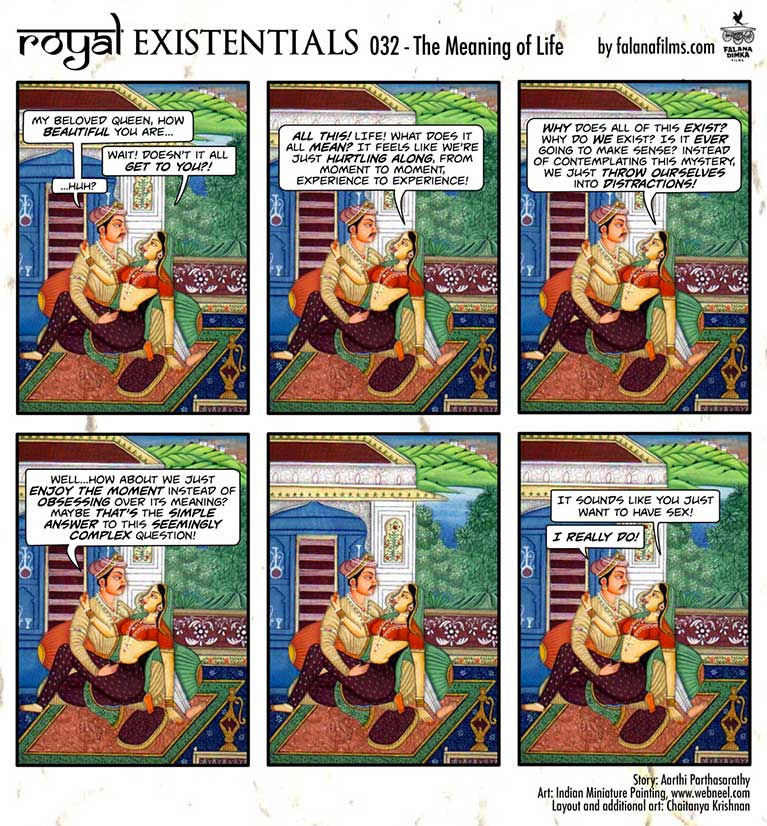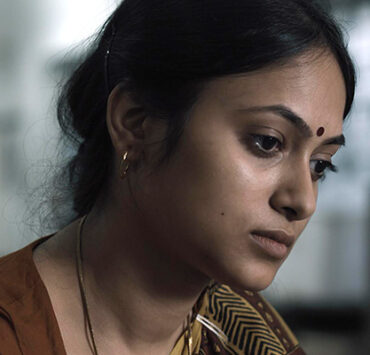Ancient Mughal miniature paintings and feminism are two things you don’t usually associate with one another. However, Bangalore-based writer and filmmaker Aarthi Parthasarathy has managed to combine the two into a weekly webcomic series called Royal Existentials, merging vintage art and contemporary social commentary, along with some subtle humour.
Inspired from David Malki’s webcomic Wondermark, which combines Victorian artwork with contemporary humour, Parthasarathy’s comics focus on the issues of feminism, class, and social inequality. We spoke to her in an exclusive interview about the weekly webcomic series, and her plans for the future. Read on for excerpts—

Royal Existentials creator Aarthi Parthasarathy.
How did you come up with the idea for Royal Existentials? How and when did you start the comic series?
The idea came to me about three to four years ago, when I first read David Malki’s Wondermark. But it didn’t happen at that point, for various reasons, which turned out to be a good thing. In the last couple of years, I’ve spent a lot of time trying to understand various forms of social inequality—issues of race, gender, caste, class, and sexuality. The churning seems to have taken this form. In August last year, I made one on a whim, and announced that it was the first of a series, and then just kept making them. It all happened very organically.
You are a filmmaker and writer—what made you consider creating and publishing a webcomic?
I love comics and graphic novels, always have. I spend inordinate amounts of time and money reading them, reading about them. And I’ve always wanted to write them. I’ve spent a lot of time trawling the Internet for webcomics, and reading everything that exists (almost). A webcomic seemed like an accessible way to put stuff out there, and this seemed like a great way to rant about whatever was on my mind. So it all just came together.
Could you tell us about the process of creating a new Royal Existentials comic every week?
Well… it depends. I have an image bank of miniatures from various sources—websites, scans, photographs. A few days prior [to creating the comic], I look at the bank and see which image aligns with whatever I happen to be thinking about that week. Then I write a few drafts while looking at the images, and then I sculpt out the dialogue from whatever I’ve written. Then I sit to make it on the computer, during which it undergoes a few more iterations. This part of the process involves obsessing over each word, the grammar, and the phrasing. Then I bug many friends, sending them mails and calling them to solicit opinions, after which it goes through a final round of changes, after which I upload it.

Royal Existentials #32.
What made you choose Indian vintage art in particular for Royal Existentials?
I love Indian vintage art. It’s a great intersection of my being an art school student and a history buff. And, the ironic juxtaposition of the opulent settings and characters of old Indian miniature paintings (among other kinds of Indian art) with philosophical exchanges on social inequality. But I must say, it wasn’t a choice, it kind of just happened.
Are any of the Royal Existentials comics inspired from personal experiences?
Many of the Royal Existentials scripts come from conversations or incidents that happen. Some refer to current events, such as the Charlie Hebdo killings or the Peshawar massacre. Basically, it happens to be whatever I happen to be reading or thinking about that particular week.
Your work contains a lot of social commentary on issues like feminism and social equality. What other themes do you wish to explore?
I hope to talk more about class and caste, that’s something I’ve been reading about and becoming more aware of lately. I think it’s important for each one of us to check our privileges and examine our prejudices with respect to them. That’s something that’s been on my mind. Other than that, I’m not sure; I don’t really plan the issues that come up in the comic. It just happens.
Other than Wondermark, which other webcomics do you regularly enjoy and why?
Wondermark is a brilliant webcomic that uses Victorian-era illustrations with his trademark bizarre, surreal humour. I love it! The other comics I enjoy are:
1. Hark, A Vagrant by Kate Beaton, which is simply the best thing there ever is or was. It’s this brilliant mix of historical, literary references with this wry, characteristic humour that just… it’s brilliant.
2. Nimona, by Noelle Stevenson. I love it so very much.
3. xkcd. Because.
4. Anything by Emily Carroll, all her work is just so stunning
5. Diesel Sweeties, a unique, fun webcomic.
6. Moonbeard, this bittersweet, tragicomic, lovely part of the Internet that I love.
What can your readers expect from you and Royal Existentials in the future?
Hmm, I honestly have no idea. I hope that it will continue regularly. I hope that it will be funny. (I hope that it is funny.) I hope it’ll engage with many different issues, talk about various kinds of inequality.








